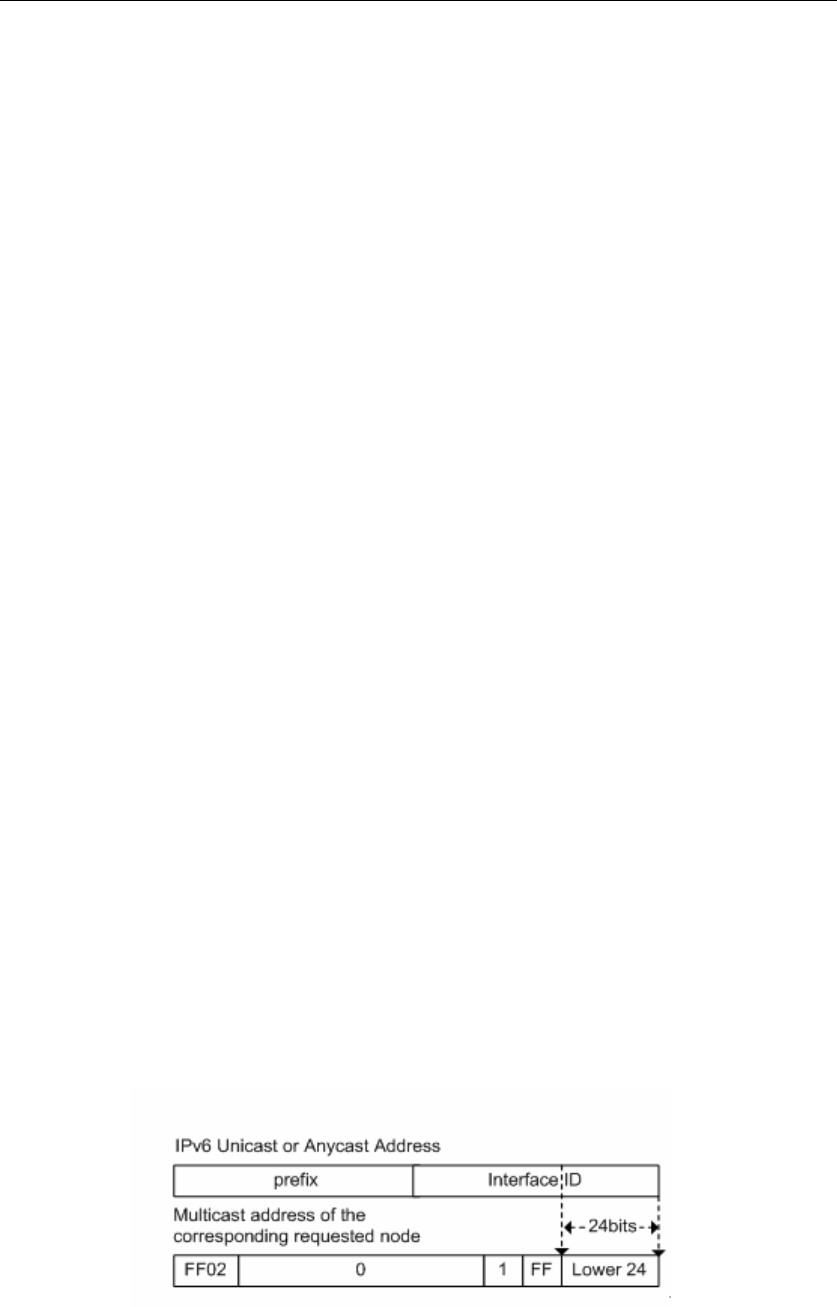
DES-7200 Configuration Guide Chapter 2 IPv6 Configuration
2-7
bit is 0, it indicates this address is a known multicast address. If this bit is 1, it indicates
that this address is a temporary one. Other 3 flag bits are reserved for future use.
z Range field:
Composed of 4 bits and used to denote the range of multicast. Namely, whether the
multicast group contains the local node, the local link and the local site or any position
nodes in the IPv6 global address space.
z Group Identifier field:
112 bits long and used to identify a multicast group. Depending on whether a multicast
address is temporary or known and the range of the address, a multicast identifier can
denote different groups.
The multicast address of the IPv6 is this type of address taking FF00::/8 as the prefix
One multicast address of an IPv6 usually identifies the interfaces of a serial of different
nodes. When one message is sent to one multicast address, this message will be
distributed to the interfaces of each node with this multicast address. One node (host
or router) should add the following multicast:
z The multicast address of all nodes for the local link is FF02::1
z The prefix of the multicast address for the solicited node is
FF02:0:0:0:0:1:FF00:0000/104
If they are routers, it is necessary to add the multicast address FF02::2 of all routers for
the local link.
The multicast address of the solicited node corresponds to the IPv6 unicast and
anycast address, so it is necessary for the IPv6 node to add corresponding multicast
address of the solicited node for each configured unicast address and anycast address.
The prefix of the multicast address for the solicited node is
FF02:0:0:0:0:1:FF00:0000/104, another 24 bits are comprised of the unicast address
or the lower 24 bits of the anycast address, for instance, the multicast address of the
solicited node corresponding to the FE80::2AA:FF:FE21:1234 is FF02::1:FF21:1234,
The multicast address of solicited node is usually used to the neighbor solicitation (NS)
message. The format of the solicited node is shown as follows:


















